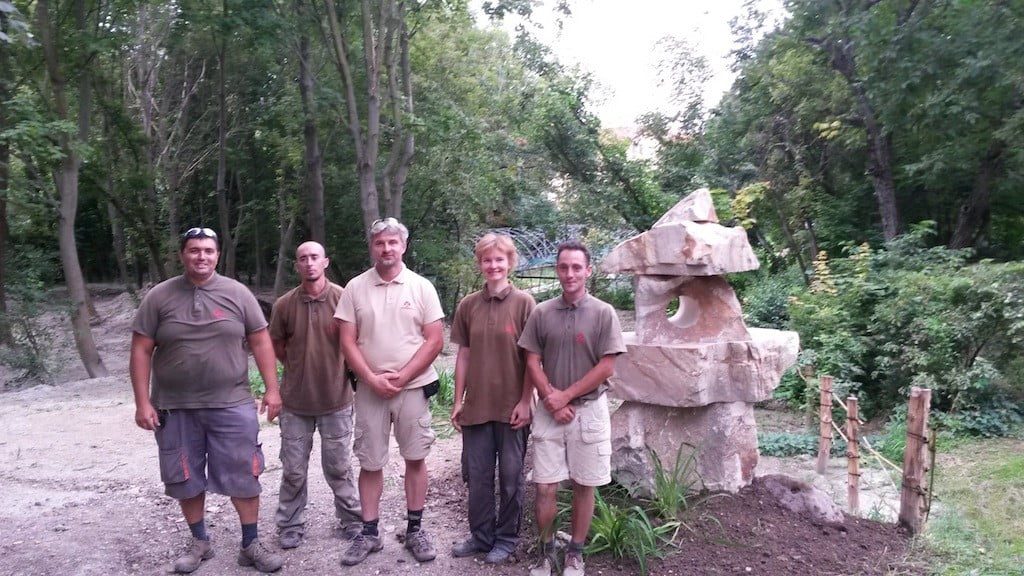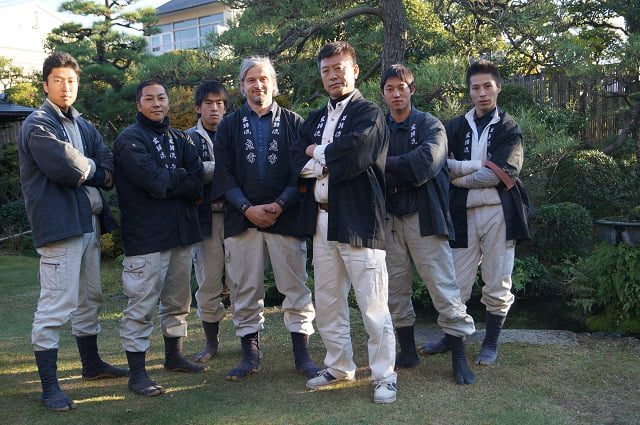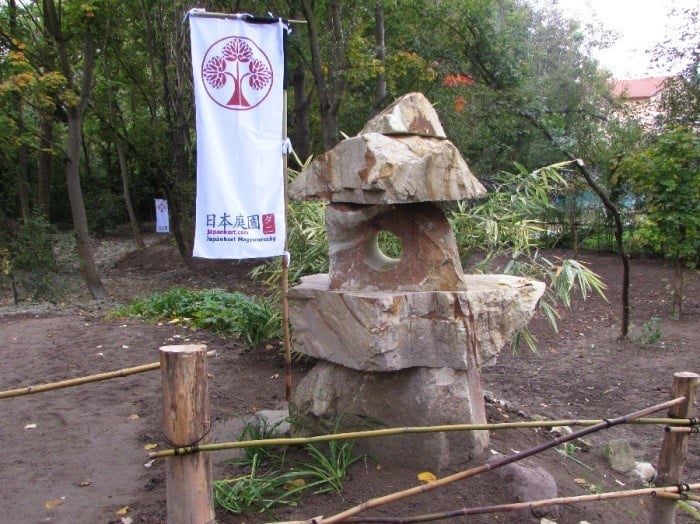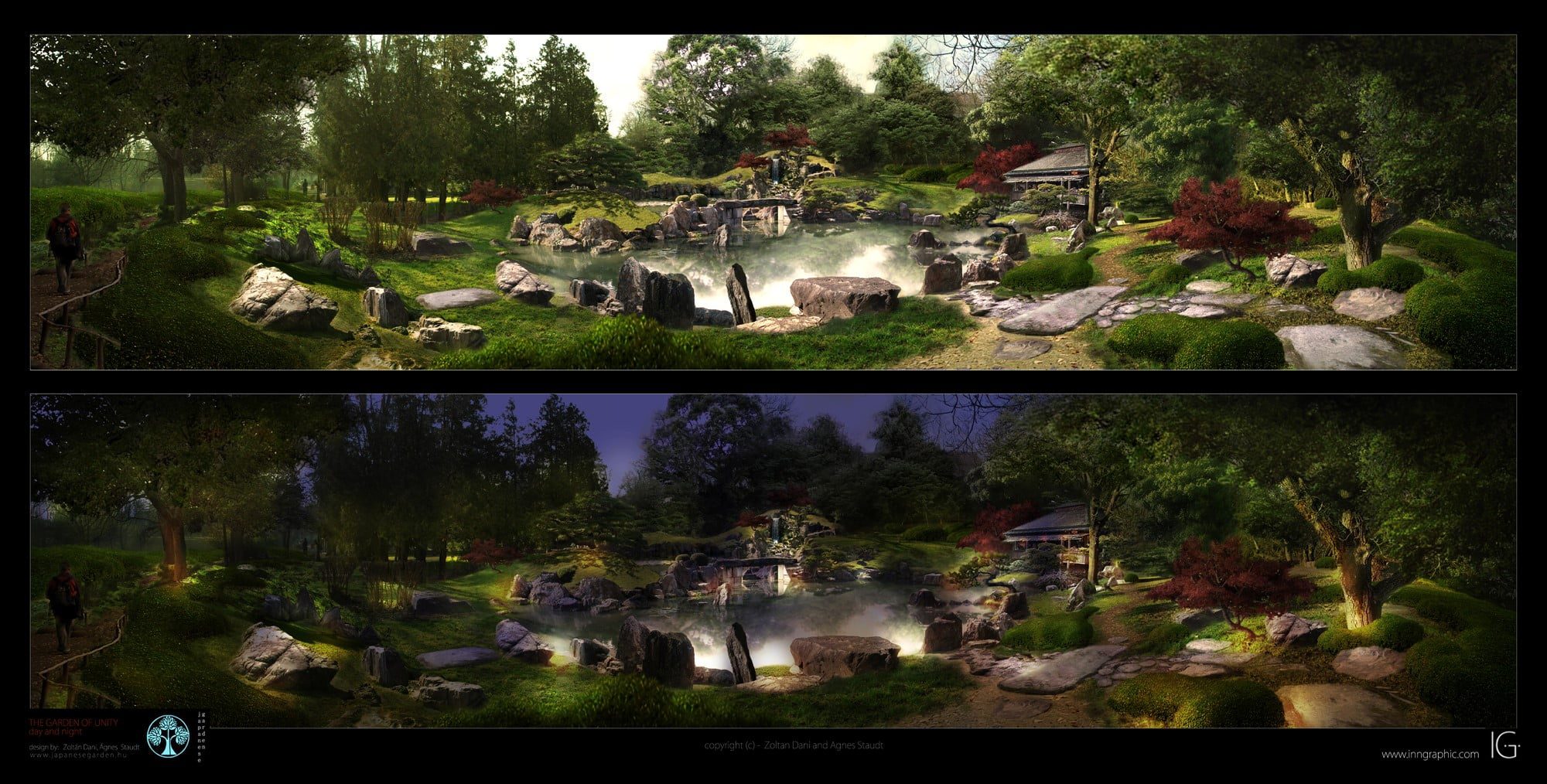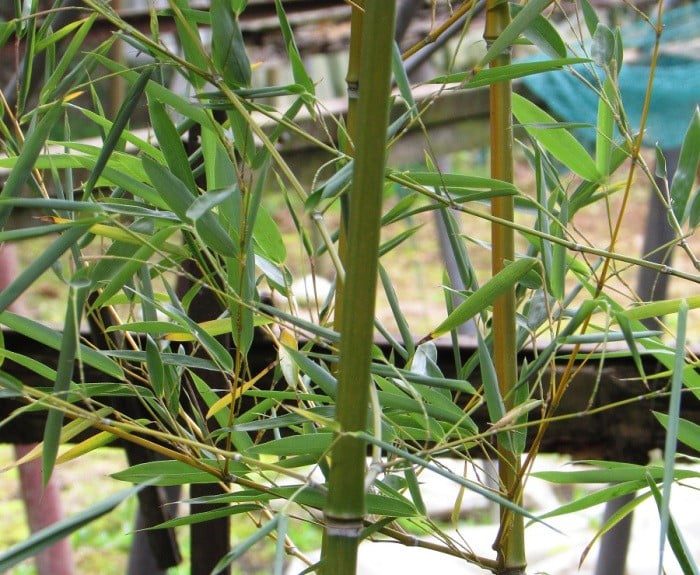A few years ago a man named Zoltán Dani contacted me and several other people with Japanese interests. He presented a project: to build a Japanese garden in a public space in the artists’ town of Szentendre. With over 10 years of Japanese garden building under his belt, he said he had finally decided to take the initiative. And his eyes sparkled with the kind of determination that convinced me to help him and his garden-building team (he’s in the middle of the following photo).
The goal was to create a public Japanese garden that could serve as an attractive backdrop to local cultural events, and act as a place of learning for people who want to pick up all the tricks of building and caring for a Japanese garden.
He won over the Kouki-ryu Kyoto Niwatsune gardening company to assist the project professionally and help bring about a Japanese garden school and workshop. Kouki-ryu Kyoto Niwatsune is a recognized traditional gardening firm, in the same family for four generations, and it also runs a Japanese garden school, also in Kyoto, “The city of gardens.” Dani had the opportunity to regularly visit the school and participate in gardening exercises, which they acknowledged by presenting him with Kouki-ryu Kyoto Niwatsune’s own certificate (The following picture shows Zoltán Dani and members of the Niwatsune staff)
The new Japanese garden will fit right into the green surroundings of Szentendre and Czóbel Park, which is right next to it. It is about a 20 minute walk from the commuter train station that connects the town with Budapest. If you walk along the street that follows the Danube (it’s called Dunakorzó), you’ll soon spot the stone lantern that marks the entrance to the future park. The yamadōrō stone lantern is the work of the Pap Stone Carving and Stone Sculpture Workshop of Szentendre. It was officially unveiled on October 3, 2014 and can be seen in the following photo.
The garden will be open to the public. At the entrance, visitors will find themselves in a rock garden. If they keep walking forward they’ll soon come across a waterfall, a pond, and a bridge that goes across. For the moment all that is hard to imagine when all there is to see is bamboo, the crater marking the location of the pond, and the lantern.
This Japanese garden here in Hungary will be unique in that it will be open as a night garden, too, allowing people to enjoy it even after dusk.
Design: Daytime and nighttime
Most of the groundwork was finished over the past year. The soil has been raised up by more than two feet all over the surrounding area, and the landscaping is ready. The fence has been built, the trees have been pruned and shaped, and the bamboo has been planted.
A pond is an integral part of a Japanese garden. A study has been completed to ascertain the quality of the water surfacing from a nearby spring that, according to the plans, will be used to fill the pond. The quality and volume of water was found to meet the needs of the Japanese garden.
The next step is to bring in the rocks. And after that, the brook that is to fill the crater and is currently about 100 yards away needs to be diverted. Plans call for laying a clay foundation under the crater dug out for the pond, which will have a constant source of water thanks to the brook. Then the grasses will have to be planted and the other plants put in place. It is hoped that everything will be finished by the end of summer.
The garden is being financed through small donations and grants, so the speed with which it is moving forward has varied. But the work has been thorough and carefully planned and executed.
Once the Japanese garden opens in Szentendre and we get to see the activities to be designed around it, we’ll be able to get even closer to Japanese culture.
Special thanks to Zoltán Dani for the photos.
For more information on the Japanese garden in Szentendre
